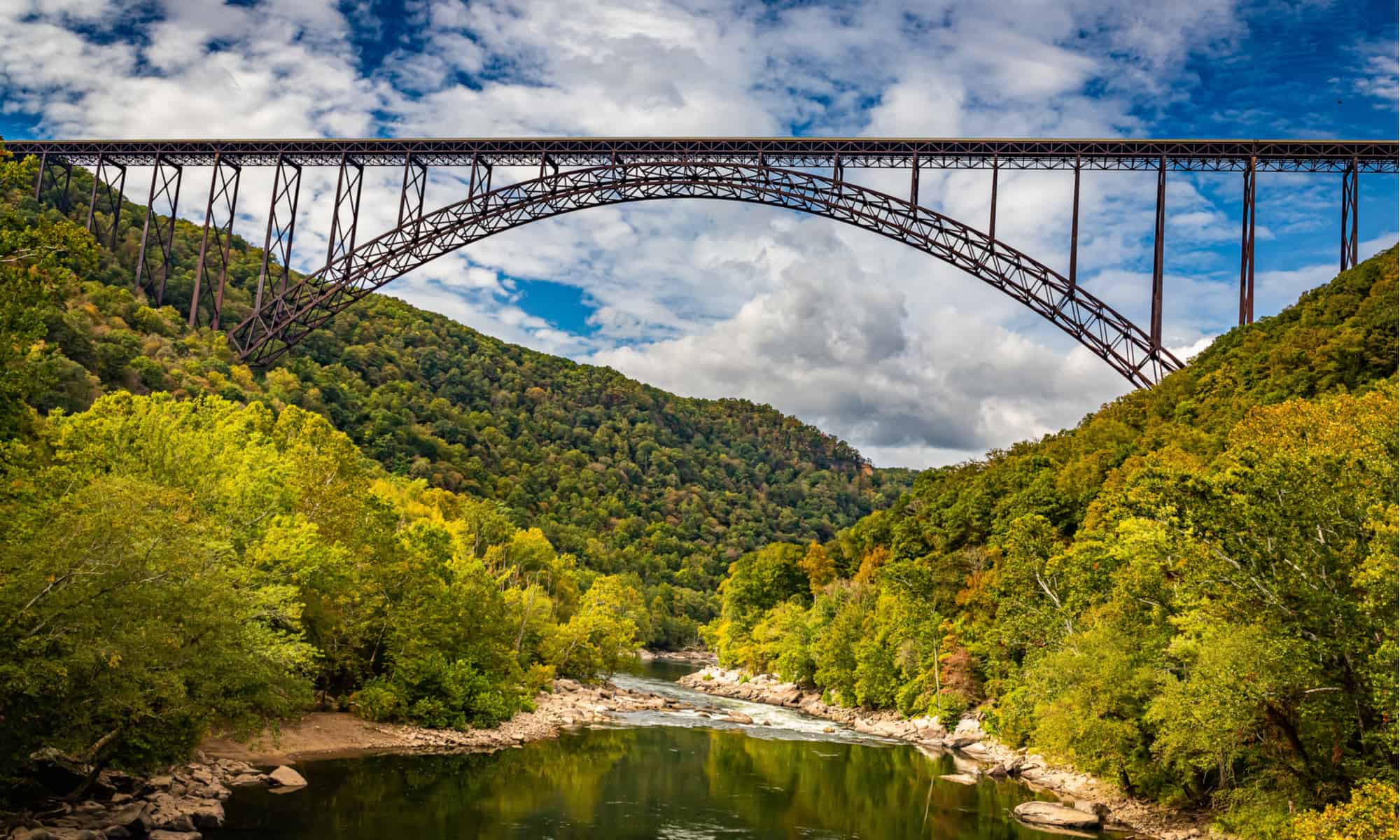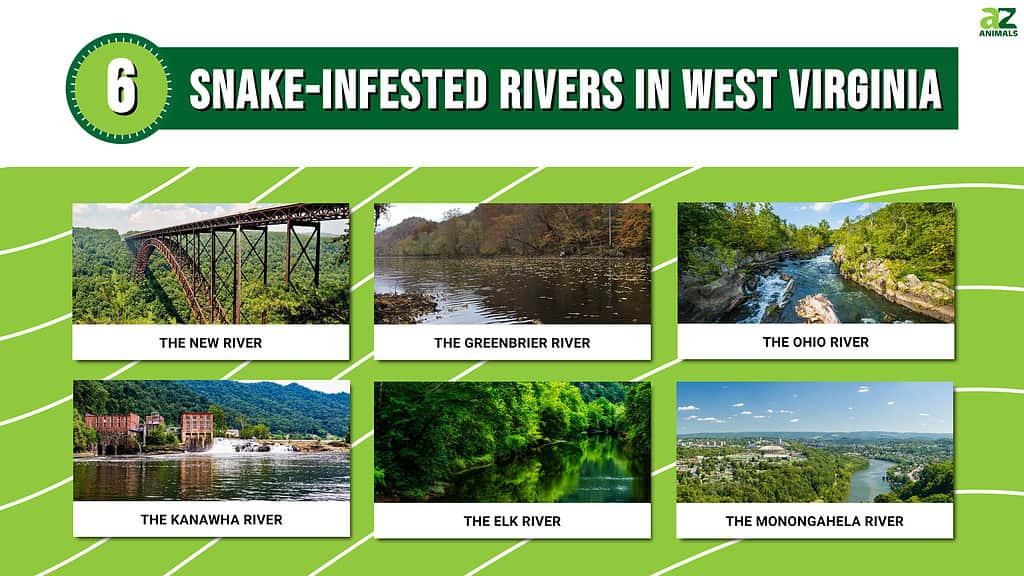
West Virginia — a lush, green, mountainous state full of nature to explore — has just under 50 named rivers within its limits. These rivers, often used by residents and tourists for white water rafting, fishing, and swimming, are home to another creature: snakes.
Dr. Kathryn Rosalie Dench, a veterinary surgeon with a deep passion for pet care and welfare and established authority in the field, spoke with A-Z Animals about West Virginia’s most snake-infested rivers.
“The New River is the most abundant, with abundant food sources attracting a variety of snake species. The Greenbrier River, with its lush vegetation and slow waters, is also a snake-friendly environment. The Ohio River, near Ohio and Kentucky, allows snakes to move more easily, boosting diversity.”
Discover the most snake-infested rivers in West Virginia, what draws snakes to these banks of these rivers, and how to handle a snake encounter in the Mountain State.
The New River
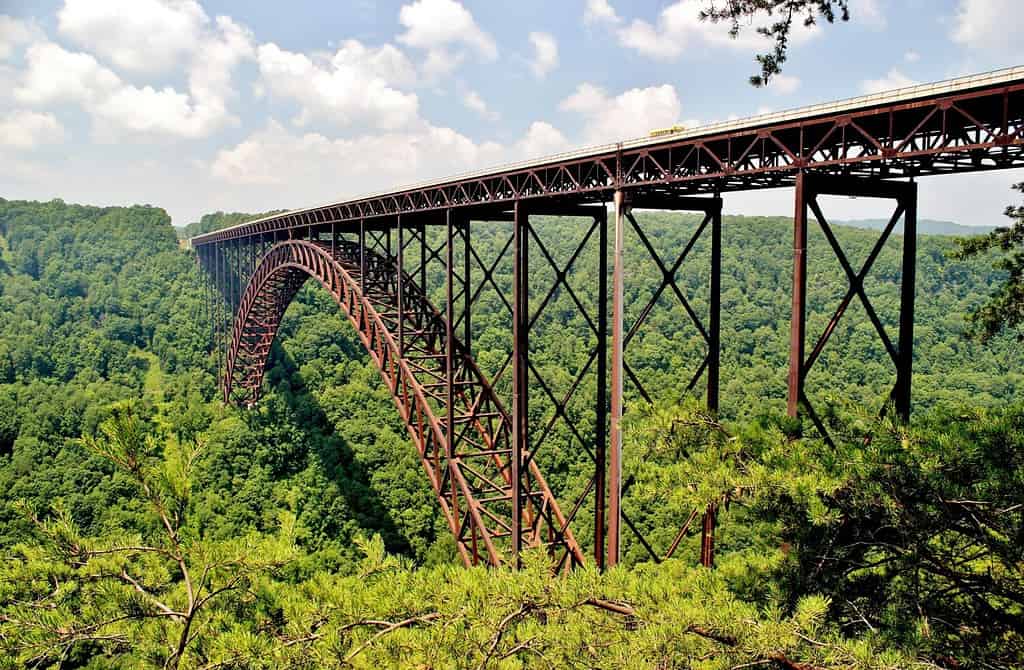
Bridge Day takes place every October over the New River, where visitors can spot over 12 different snake species.
©CathyRL/Shutterstock.com
As one of the oldest rivers on the continent according to the National Parks Service of West Virginia, the New River ranks as the most snake-infested river in West Virginia thanks to its length, age, and bountiful habitats.
The New River is part of the Ohio River watershed and flows through West Virginia, as well as parts of Virginia and North Carolina. Its mouth is the Kanawha River. On its own, the New River measures over 300 miles in length.
Most notably, adventurers seek out the New River for its major bridge: The New River Gorge Bridge. Every October, the state holds a single-day festival called Bridge Day on the New River Gorge Bridge for BASE jumpers, and rappellers to fly 876 feet into the gorge.
Common Snakes in the New River: Along the New River and in its adjoining National Park, you can find about a dozen different snakes in the waters and brush. They may include the eastern garter snake, the common garter snake, and the cornsnake — among many others. You will also find West Virginia’s two venomous snakes: the timber rattlesnake and the northern copperhead.
The Greenbrier River
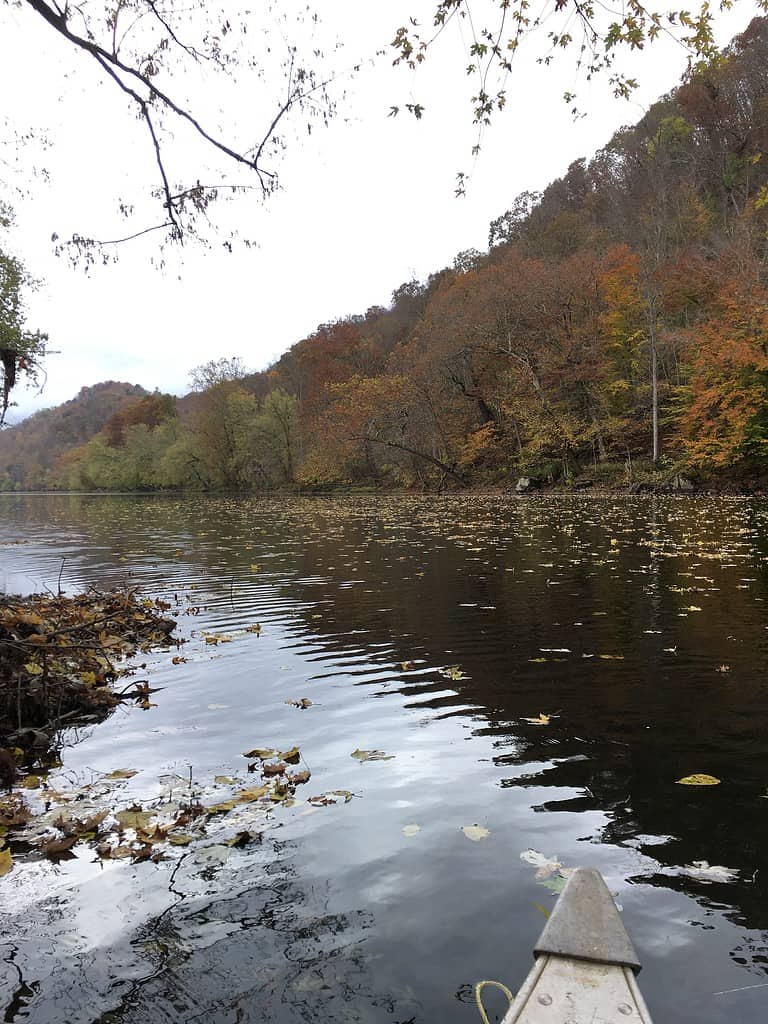
Not one part of the Greenbrier River is dammed, allowing for free-flowing water great for kayaking and tubing.
A tributary of the New River, the Greenbrier River is a unique body of water that flows through many West Virginia counties. The Greenbrier River remains the longest free-flowing stream in West Virginia, as the state has not dammed any of the river or its branches.
In the seventeenth and eighteenth centuries, both Native Americans and European settlers used the river to survive. The limestone strata banks of the river provided fertile land for residents to farm, and the water source remained a key resource for both drinking water and catching fish.
Common snakes in the Greenbrier River: Visitors along the Greenbrier River Trail and other entrances see black rat snakes, garter snakes, and the odd timber rattlesnake.
The Ohio River
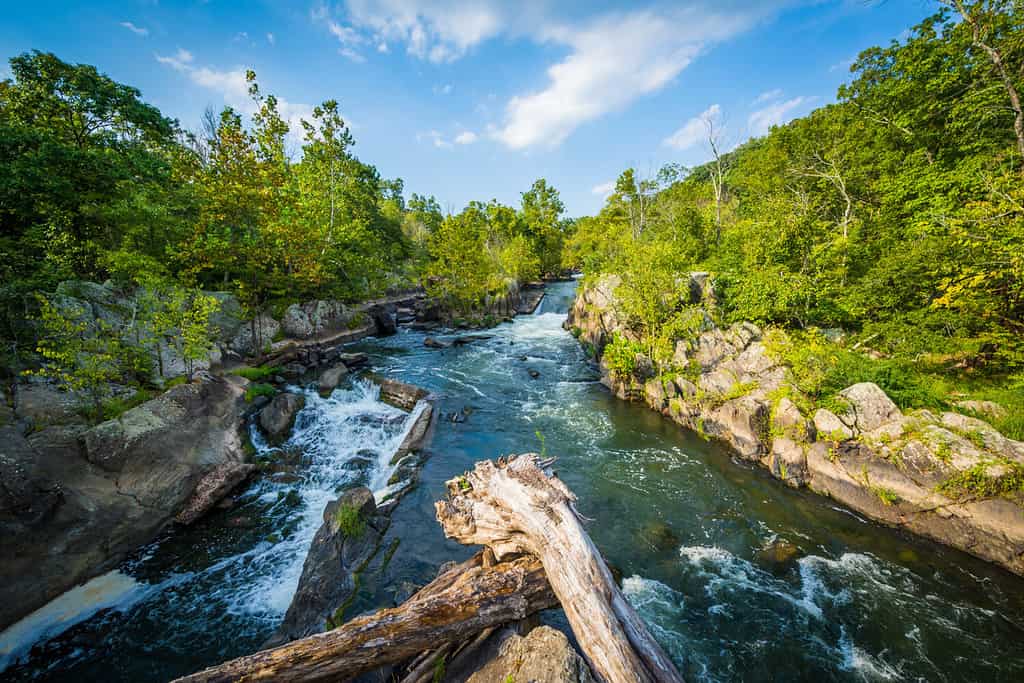
Most of the snakes within the Ohio River are nonvenomous water snakes.
©Jon Bilous/Shutterstock.com
Did you know that the state of Ohio doesn’t actually “own” the Ohio River solitarily? It shares jurisdiction with Kentucky, and West Virginia has full jurisdiction over the parts of the river it touches. It flows through a whopping seven different states, starting in Pittsburgh, Pennsylvania, and reaching as far south as Illinois and Missouri.
The Ohio River borders much of the western part of West Virginia. It actually creates the state line between Ohio and West Virginia. The West Virginia towns Huntington, Henderson, and Parkersburg include just a few of the many cities that border the Ohio River.
During the Civil War, the Ohio River served as both a demarcation of free versus slaveholding states, and a symbol of the Underground Railroad to escaped slaves that freedom was close. Once slaves crossed the Ohio River, they ended up near Ripley, Ohio as one of the final stops on the journey.
Common snakes in the Ohio River: The Ohio River is home to several non-venomous water snakes, including the ribbonsnake, the northern water snake, and the copper-bellied water snake. You can also find the Ohio Valley water snake, queen snakes, and eastern fox snakes in the Ohio River.
The Kanawha River
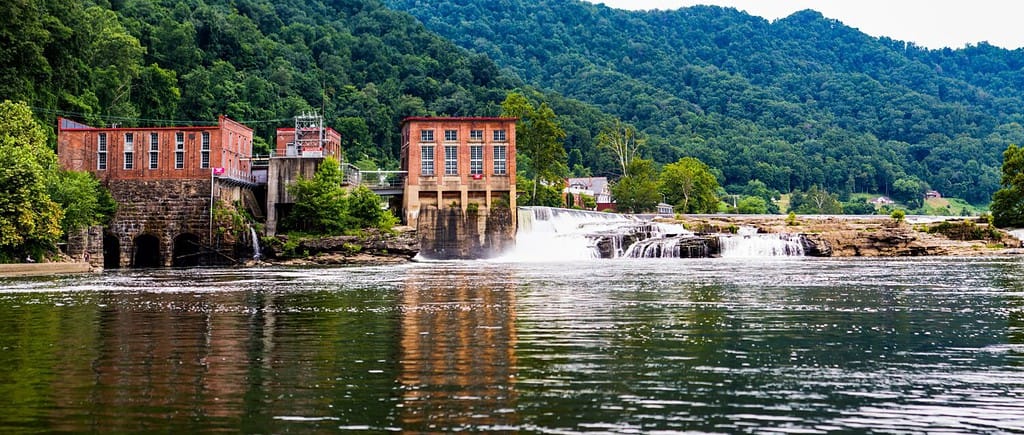
Even today, the town of Glen Farris operates on the banks of the Kanawha.
©canonball photography/Shutterstock.com
This tributary of the Ohio River is an old landmark of the region. Ecologists have found that its waterfall has barred fish movement into other places in the river for over one million years.
The Kanawha River serves as a crucial watershed for its region. Since the nineteenth century, residents and early settlers used the Kanawha River for industrialization. Even today, the small town of Glen Ferris, West Virginia, sits on the banks of the river and uses it for industrial purposes.
At around 100 miles long, the Kanawha River provides ample opportunities — especially near bigger cities — to indulge in water sports. The most popular activities include boating, fishing, and tubing during the summer.
Common snakes in the Kanawha River: Commonly, swimmers and other water recreation adventurers will encounter a northern copperhead in the Kanawha River. Other snakes you may see in the Kanawha include the eastern black kingsnake and garter snakes.
The Elk River

Elk River cuts through Braxton County, West Virginia, where some of the most dense forest creates a serene habitat for snake populations.
©Malachi Jacobs/Shutterstock.com
The 172-mile-long Elk River, which is a tributary of the Kanawha River and part of the Mississippi River watershed, has incredibly high-quality water. It provides drinking water to the city of Charleston, West Virginia’s capital, and other nearby towns. In Upper Elk, you’ll find a subterranean network of caves that challenges experienced spelunkers.
Unlike some of the other rivers on the list, the Elk River winds through the most remote parts of West Virginia, creating a near-perfect habitat for many snakes. These untouched lands of dense forest provide shade, warmth, water, and protection from humans for healthy snake populations to grow.
In the past, explorers and businesses used the Elk River as a method of transportation for trading goods across West Virginia.
Common snakes in the Elk River: You may see a timber rattlesnake, an eastern hognose, an eastern milk snake, a northern watersnake, or a northern copperhead while swimming in or nearby the Elk River.
The Monongahela River
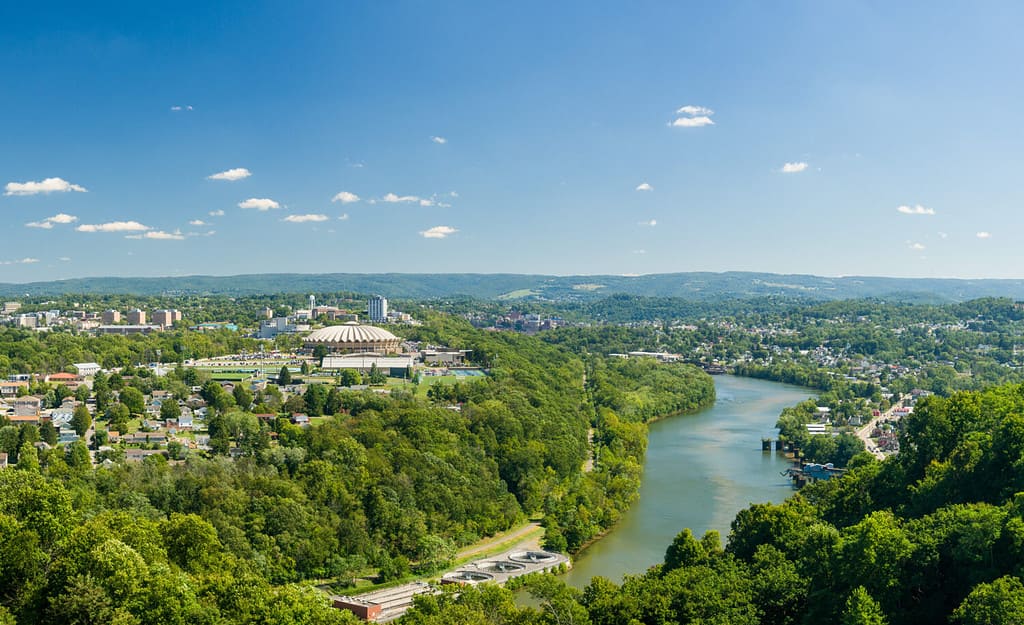
The Monongahela flows beside West Virginia University (WVU),
the state’s largest college
by both enrollment and acreage.
©Steve Heap/Shutterstock.com
Finally, the gently-flowing Monongahela River in West Virginia provides a suitable home to many snakes thanks to the slow-moving water and its fertile banks. Interestingly, the river distinguishes itself as one of only 245 in the entire world that flows north rather than south. Its confluence with the Allegheny River near Pittsburgh creates the Ohio River.
Because the river moves slowly, the Monongahela, colloquially referred to as the Mon, remains a popular recreational river for boaters, anglers, and other water sports enthusiasts. During a hot summer day, you’ll often see jet skis, kayakers, bass boats, and tubers ready for an afternoon of lazy river riding.
Common snakes in the Monongahela River: Snake species in this river seen most often by locals and tourists include the black rat snake, northern water snake, and the common water snake.
Why Do Snakes Love West Virginia Rivers?
“West Virginia’s rivers have healthy snake populations due to various environmental factors,” said Dr. Dench. “These include abundant food sources, suitable habitats, water availability, limited human disturbance, and geographical proximity.”
Snakes don’t want to be around humans, but they do need water sources and abundant food. As such, the riverbanks of West Virginia provide the best of both worlds. West Virginia’s rolling hills, mountains, valleys, and overall rugged terrain with sparse populations make the state a paradise for many snake species. Because most of West Virginia’s population resides in larger cities, or at minimum away from the densest forest riverbanks, snake populations can thrive without human intervention.
“Snakes thrive in diverse environments, including fish, amphibians, and small mammals,” said Dr. Drench, drawing on her years of experience in veterinary medicine with Gentle Dog Trainers. “Riverbanks and vegetation provide shelter, basking sites, and breeding grounds for snakes. Water is essential for hydration and thermoregulation. Undisturbed areas along riverbanks help reduce habitat destruction and snake deaths. Geographic proximity also contributes to snake migration and population intermingling,” Dr. Dench finished.
The climate in West Virginia for most of the year provides temperate weather that keeps snakes comfortable. When the temperatures drop below 60 degrees Fahrenheit, snakes have ample opportunities to burrow underground and overwinter under the freeze line.
Alex van der Walt, a veterinarian with experience in veterinary offices and farms in Australia and South Africa, also commented on why West Virginia’s most common snakes enjoy the banks of the rivers so much. “It’s clear that West Virginia’s rivers provide ideal conditions for these snakes. The abundance of freshwater habitats, combined with plenty of prey and suitable temperatures, support healthy snake populations. Particularly, snake-infested rivers are likely those with slow-moving or stagnant waters, abundant wetlands, and nearby woodlands.”
How to Handle Snake Encounters in Snake-Infested Rivers in West Virginia
“Snakes play a crucial role in maintaining ecological balance by controlling rodent populations and serving as prey for other animals. Most snake species in West Virginia are non-venomous and harmless to humans,” said Dr. Dench.
West Virginia has about 20 different snake species slithering around the woods, fields, and wetlands of the state. As Dr. Dench indicated, only two out of the 20 are venomous: the timber rattlesnake and the northern copperhead.
No matter which snake you come in contact with during your time in one of West Virginia’s lakes, practice respectful snake safety. This includes:
Keeping your Distance.
Don’t try to pick it up, capture, or harm it. Even if it’s injured, it’s best to call a park ranger or wildlife conservation officer rather than try to handle it yourself. Snakes can also only strike about half of their body length — so if you’re not within arm’s reach of them, they probably won’t feel as threatened and be persuaded to coil or strike.
Staying Aware of Your Surroundings.
Depending on the snake, they may swim on top of the water or nest close to the banks. If you’re hiking toward the river, step on a log first before stepping over it to avoid startling any snakes that might be in it. Use a walking stick to hit any brush in your path. Avoid setting up campsites or a lounge area near thickets or leafy bushes, as these are some snakes’ favorite hiding places.
Being a Respectful Guest.
You’re in their territory, not the other way around. Don’t disturb nests you see and back away slowly if a snake feels threatened by your presence.
Swimming with Snakes in the Mountain State
When jumping into one of West Virginia’s many rivers, consider the habitat you’re disturbing while you’re on your way to have fun. The most snake-infested rivers in West Virginia provide stable, reliable homes to foster healthy snake populations. These snakes play a crucial role in the food web — controlling rodent and insect populations while serving as food for birds, mammals, and other snakes.
Thank you for reading! Have some feedback for us? Contact the AZ Animals editorial team.

